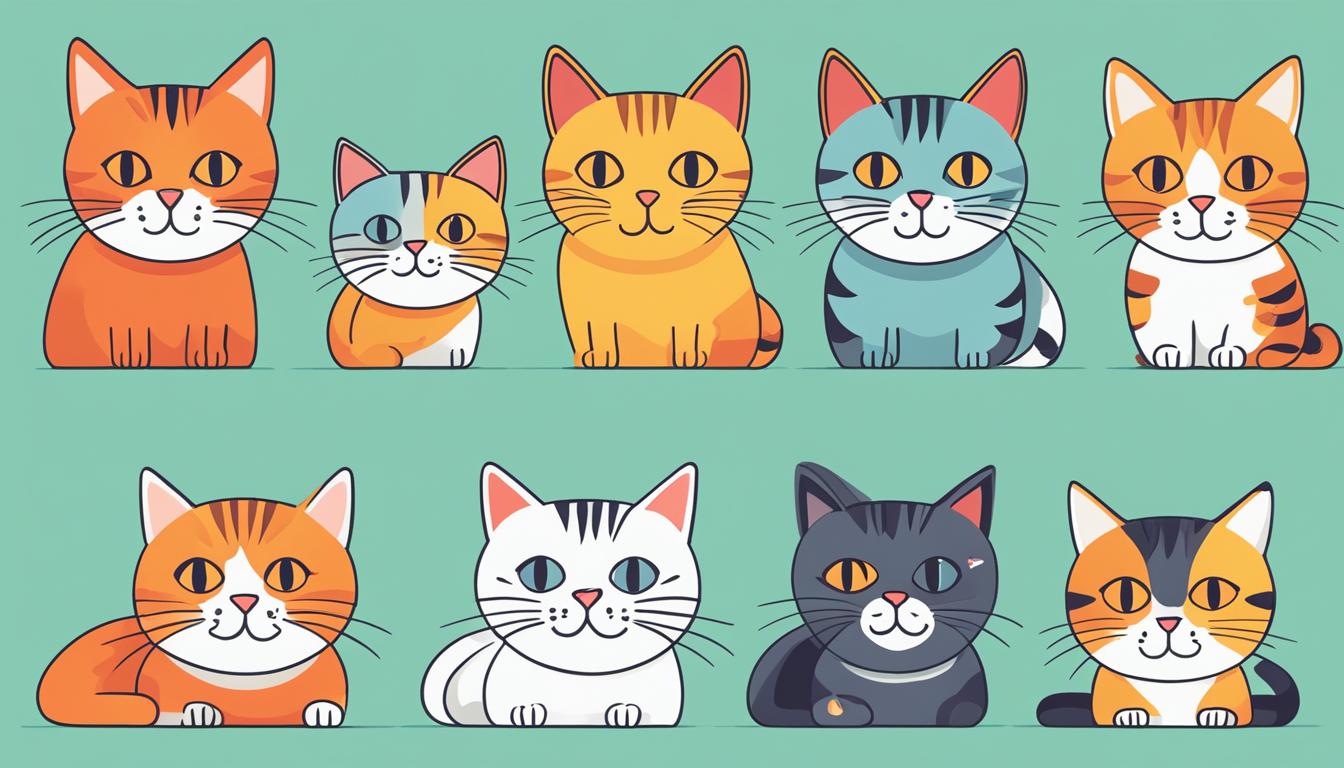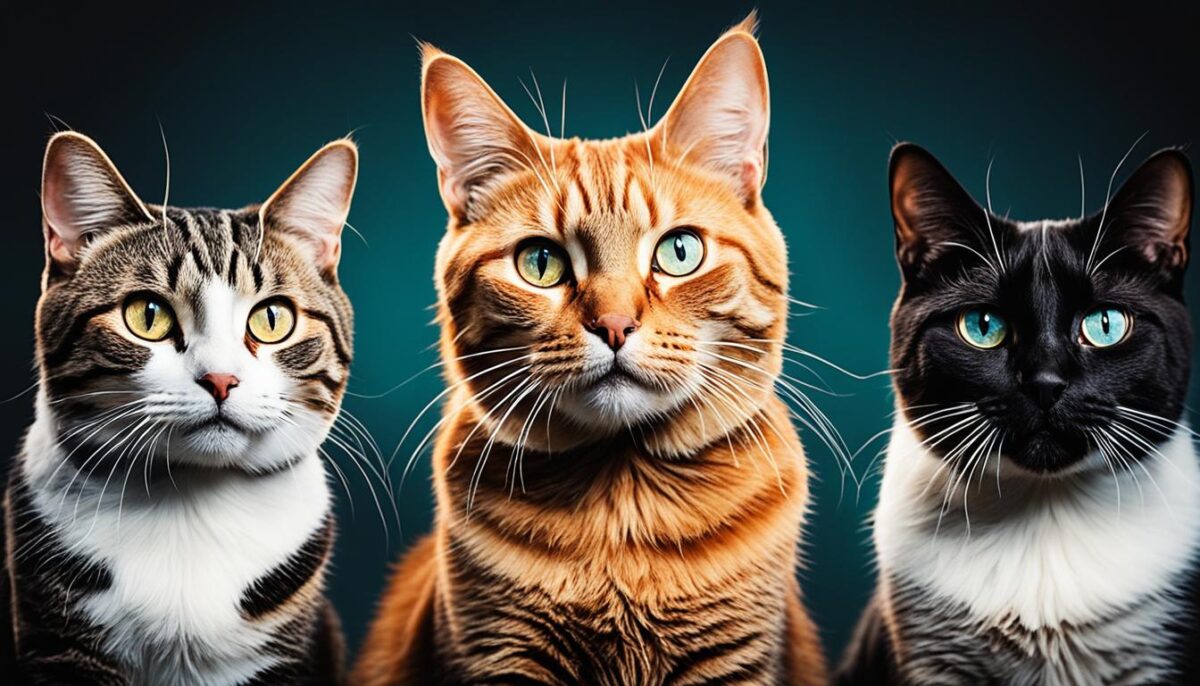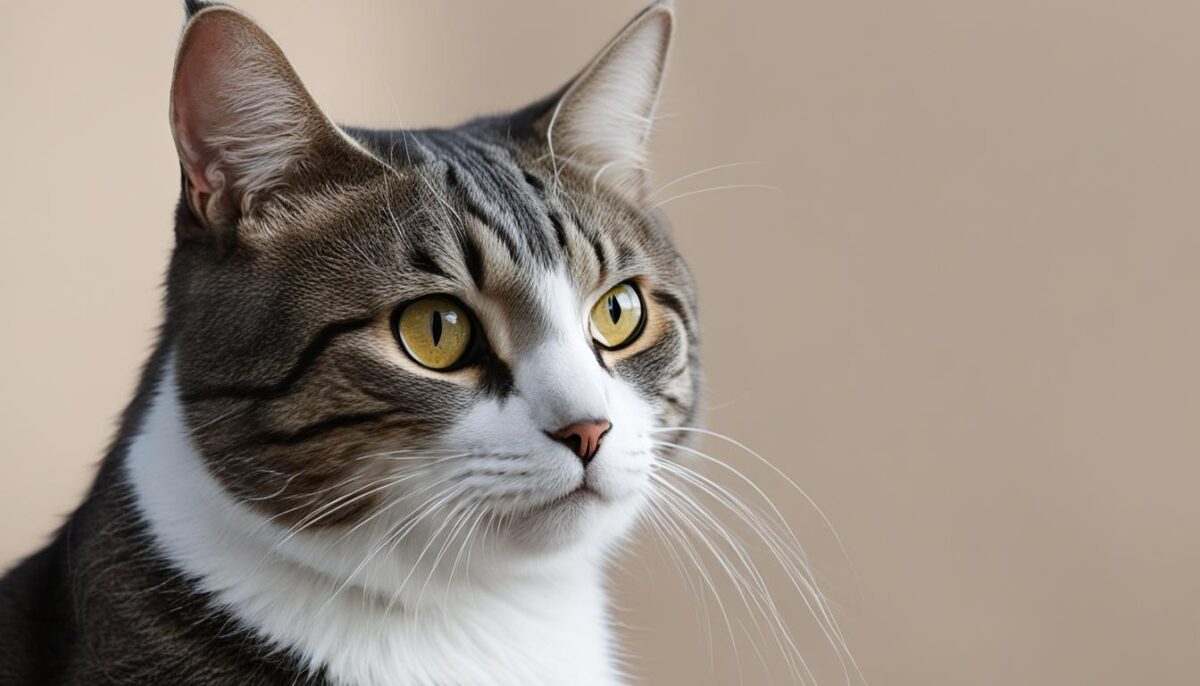Have you ever wondered if your fluffy friend has feelings? Well, it turns out that cats can feel many things! Just like you and me, cats can be happy, sad, scared, angry, surprised, and even disgusted. You might not always see these feelings on their cute faces, but they are there. If you think about all the times you have hung out with your cat, you might remember when you saw these feelings. So, to your big question, do cats have feelings? The answer is a big yes!
Key Takeaways
- Cats have feelings just like we do.
- Their feelings can be happy, sad, and more.
- You can see their feelings in the things they do.
- Remembering times with your cat can show you their feelings.
- Yes, your furry friend does have feelings!
Understanding Feline Emotions
Ever wonder about cat emotions? You’re not alone! Cats can be mysterious, but they feel many things just like we do. It’s all about recognizing cat feelings to truly connect with them.
Some folks in the Netherlands did a study. They asked people with pets about their furry friends. What they found is pretty cool — cats and dogs both showed they could feel happy or mad. Cats may not be as loud or showy as dogs, but that doesn’t mean they don’t feel. When you really understand your pets, they’re more likely to show you how they feel.
So, let’s talk about how you can tell what your cat is feeling.
- If your cat purrs and rubs against you, it’s a sign they’re happy.
- A cat with ears pinned back or a puffed-up tail might be scared or annoyed.
- When a cat brings you a toy, it might be trying to play, showing they’re in a good mood.
Remember, every kitty is different. They have their own ways to express love and other feelings. Paying attention to these small things is the key to understanding pets and building a strong bond.
The Emotional Range of Cats
Have you ever wondered about the diverse feelings in cats? Cats can have all sorts of cat moods and feline emotional expression just like people do. They can feel happy when you play with them or sad when they miss you. They might get scared during a storm or feel upset if their dinner is late.
Just like us, each cat is unique and has its own way of showing feelings. Here’s a fun fact: when your cat rubs its head against you, it’s sharing its happy scent! Isn’t that cool?
To help you understand your furry friend better, let’s look at a table that shows different cat moods:
| Mood | How You Can Tell | What You Can Do |
|---|---|---|
| Happy | Purring, slow blinking, tail up | Give treats or play time |
| Sad | Not playing, hiding more | Extra cuddles, soft talk |
| Scared | Hiding, ears back, wide eyes | Quiet space, calm approach |
| Frustrated | Swishing tail, avoiding touch | Patient space, new toys |
Remember, when your cat feels love and care, it’s the happiest. So, keep an eye out for your kitty’s moods, and you’ll be the best of friends.
Do Cats Have Feelings Just Like Us?
Ever wonder how your fluffy friend shows you they care? Cats have special ways of saying, “I love you!” They might not speak our language, but they still tell us a lot!
Signs of Affection and Bonding in Cats
When your cat snuggles up close and purrs, it’s their way of showing love. You might also see them following you around or bringing you small gifts like toys or even a sock. It’s like they’re saying, “You’re my favorite human!”
Fun fact: Cats can feel so close to their people, they think of them as their family. Kind of like how you might feel about your best friends or parents!
Interpreting the Body Language of Cats
Cat body language is like a secret code — and you can be a detective figuring it out! When cats are happy, their tails go high in the air, and they might rub against your legs. If they’re not feeling friendly, they might make themselves look big and hiss. It’s their way of saying they need space.
Here’s a handy table to help you decode what your cat might be trying to say:
| Sign | What It Means |
|---|---|
| Rubbing Against You | They’re feeling happy and safe with you. |
| Slow Blinking | It’s like a kitty kiss, showing trust and love. |
| Purring | Purring is a sign they’re relaxed and content. |
| Ears Forward | They’re curious and interested in what’s happening. |
| Tail Twitching | They might be feeling excited or thinking about hunting. |
| Flattened Ears | Watch out, they might be scared or upset. |
Remember, every cat is unique, so keep watching and listening to learn how your kitty says, “I love you!”
Recognition of Human Emotions by Cats
Hey there! Did you know that your fluffy friend can understand how you feel? It’s true! Cats understanding humans is not just a guess; they really get it. When you’re full of joy and smiling, your kitty likely knows you’re happy. If you’re frowning or sound upset, your cat can tell that too. They don’t just listen to your voice; they look at your face and figure out your feelings.
Just like you know when your friend is sad or excited, cats have that skill for emotional recognition as well. Have you ever been super sad and your cat came to snuggle? That might be because they knew you needed a friend. Cats can be really sweet like that. They don’t only do this with people but with other cats too. So the next time you’re hanging out with your cat, remember, they’re way smarter than we sometimes think!
Cat Behaviors and What They Tell Us
Have you ever watched your cat and wondered what it’s thinking? Well, cat behavior meaning can tell us a lot about how cats feel. Like when your kitty sneaks up and then suddenly flips over, showing its belly. That’s a big sign your furry friend trusts you a lot!
But wait, there’s more! Cats have all sorts of ways to express themselves. When a cat blinks slowly at you, it’s like a kitty kiss. And if your cat is following you around, it might just mean they want some attention or maybe a tasty treat.
Feline actions decoded can also show us when your cat might be feeling jealous. Imagine you’re petting another cat, and your kitty sees this. Watch for signs like your cat turning away or swatting at your hand – they might be trying to say, “Hey, I want some love too!”
| Behavior | Meaning |
|---|---|
| Head Bunting | Your cat is saying “You’re my human, and I love you!” |
| Chattering at Birds | It’s seeing prey and might be feeling frustrated or excited. |
| Hissing or Swatting | Your furry buddy is scared or annoyed and needs some space. |
| Purring | Mostly, this means your cat is happy, but sometimes it can also mean they’re nervous. |
| Ears Back | Watch out! Your cat might be scared or ready to pounce on something. |
Cats sure have their own special ways to show how they feel, right? Remember, the next time your cat does something cute, it’s not just for fun. They’re talking to you! So, keep an eye out for these little hints, and you’ll understand your cat better every day.
Do Cats Have Feelings?
Have you ever wondered if our fluffy friends feel the same things we do? You’re not alone! Scientific research on feline emotions is telling us that cats have feelings too. They can feel happy when you play with them and feel hurt if things change too much for them.
Cats are a big mystery sometimes. They don’t always show how they feel, but that doesn’t mean they don’t care. Behavioral science in cats is like being a detective to understand what’s going on in their furry heads. Let’s dive in and see what science says about the emotional states in cats.
The Science Behind Cat Emotions
Behavioral science in cats looks at how cats act to figure out what they feel. These smarty-pants scientists watch and learn from cats all the time. They see that cats can get scared or really excited, just like kids!
Can Cats Feel Hurt or Joy?
Did your cat ever look a little blue when you left for school? Or did it spin around with its tail high when you came back? That’s because cats can feel things like joy and hurt. They’re not so different from us. So next time you see your cat, remember they have feelings and give them an extra little pat or treat to show them you care.
Conclusion
So, we see that the emotional world of cats is full and real. They are not so different from us when it comes to feelings. Cats can be happy when they play with their favorite toy. They can feel scared during a thunderstorm. They might even feel jealous when you spend time with other animals. But did you know that they can tell how you’re feeling, too? Yes, they can! Your furry friend is smart. When you’re sad, they often try to make you feel better.
Learning how to understand pet feelings is a big part of caring for your cat. It’s like being a detective sometimes. You have to look for clues in what they do and how they act. This helps you know when to give them cuddles or when they want to be alone. It will make you and your cat get along even better. Paying close attention to your kitty helps you be the best friend you can be to them.
In the end, remember that your pet cat feels a lot of the same emotions that people do. By getting to know these feelings, you can help them feel safe and loved. And they’ll love you back so much. That’s what makes having a cat so special. So keep watching, listening, and loving your cat, and you’ll have the happiest cat and the strongest friendship!
FAQ
Do cats actually experience emotions like we do?
Yes, cats experience a range of emotions similar to humans, including happiness, sadness, fear, anger, surprise, and disgust. They may not show their feelings as overtly as we do, but they certainly feel them.
How can I tell if my cat is happy or content?
A happy cat will often have a relaxed body posture, a raised tail, and may engage in playful behavior. They may purr, knead with their paws, or rub against you as signs of contentment.
What are some indications that a cat is feeling scared or threatened?
Signs that a cat is scared or feeling threatened include hissing, puffing up their fur, flattening their ears, and tucking their tail. These behaviors are part of a cat’s natural defense mechanisms.
Can cats recognize and respond to human emotions?
Cats are quite perceptive and can recognize human emotional cues such as facial expressions and tone of voice. They may respond to their owner’s emotions by offering comfort or keeping their distance, depending on the situation.
What does it mean when a cat displays its belly to me?
When a cat shows you its belly, it’s generally a sign of trust and comfort. This vulnerable position indicates they feel safe with you. However, be cautious as some cats may not like their belly rubbed and could react if you misinterpret this behavior.
Do cats form secure attachments with their owners?
Yes, much like the bond between parents and their children, cats can develop secure attachments to their owners. They see their human caregivers as a source of safety and may display signs of affection to strengthen this bond.
Can a change in routine upset a cat’s feelings?
Cats are creatures of habit and value a consistent routine. Significant changes can lead to feelings of stress or distress. It is important to introduce changes gradually and provide extra comfort and reassurance during transitions.
How do cats communicate their feelings?
Cats communicate through a variety of methods including vocalizations, body language, and behavior. For example, purring often indicates happiness, while flattened ears or a twitching tail can show annoyance or anger. Observing these cues can help you better understand your cat’s feelings.
Is jealousy an emotion that cats can feel?
Yes, cats can experience jealousy, particularly if they feel their social status or the attention they receive from their owner is threatened. They may act out or display attention-seeking behaviors in response to feelings of jealousy.
What does science say about feline emotions?
Scientific research has provided evidence that cats have emotional states. Studies show that cats can distinguish between positive and negative emotions in humans and other cats, and demonstrate a variety of emotional reactions themselves.


